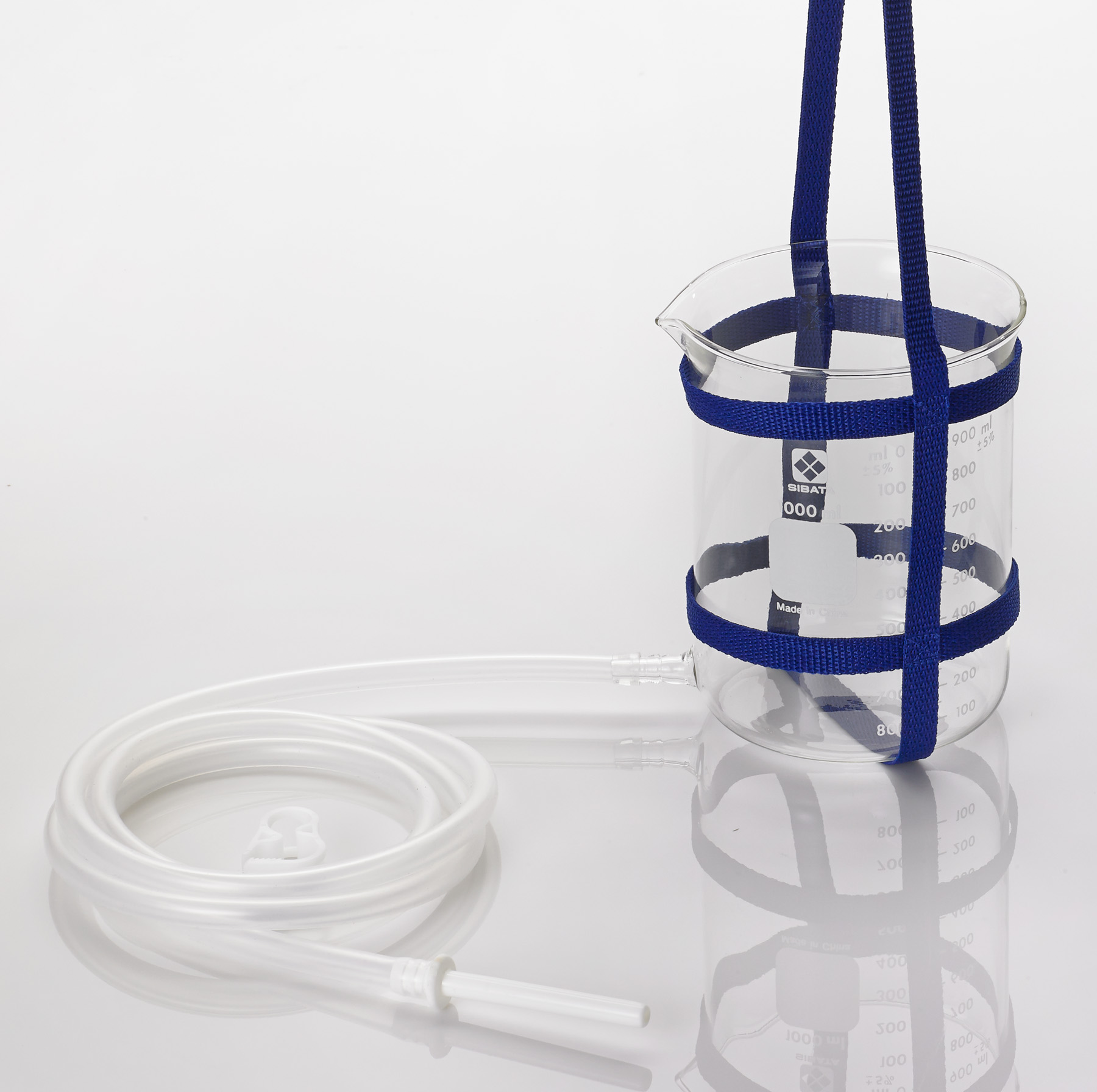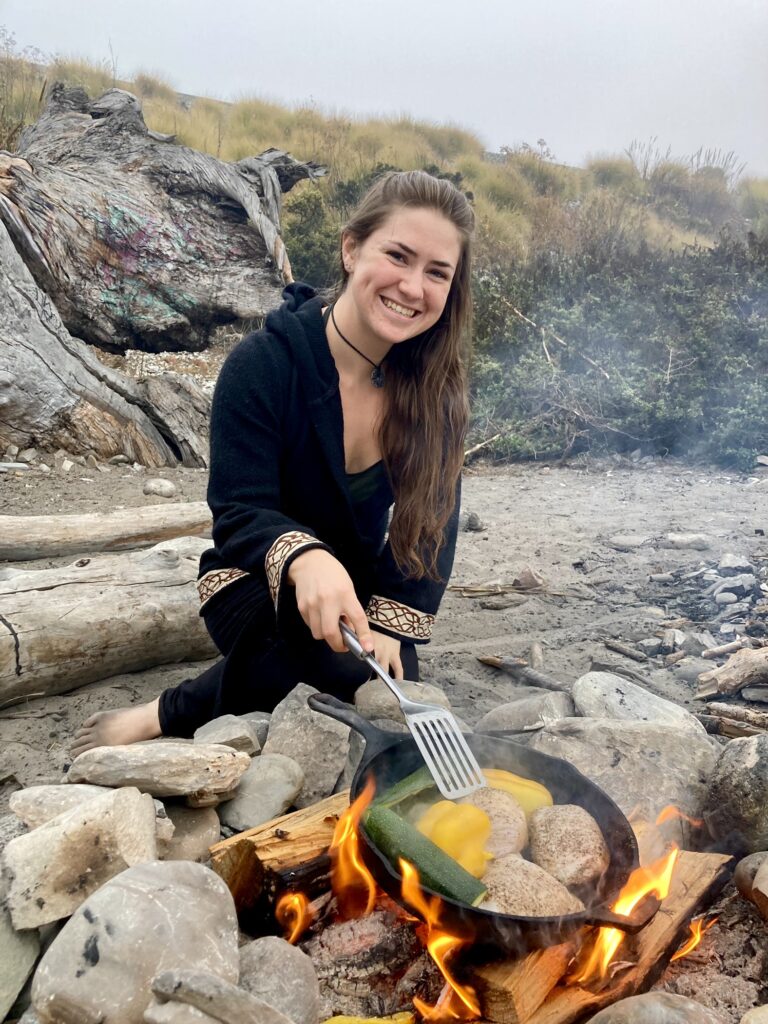Overcome Your Gut + Digestive Issues With Ancestral Nutrition
How To Do A Coffee Enema For Colon And Liver Detox

What Is A Coffee Enema?
Enemas are actually an ancient health practice used in many cultures. The first recorded use dates back to 1550 BC in Egypt.
A coffee enema is when you use an enema kit (bucket + tube) to put lukewarm coffee into your intestines via your anus.
During an enema, coffee is held in the intestines and caffeine is absorbed into the bloodstream and travels to your liver. This stimulates the liver and gall bladder to push out bile which carries the toxins from your liver into your colon and out of the body with your bowel movement. This makes coffee enemas excellent for liver and bile duct cleansing! (1, 2, 3)
Since enemas are flushing out your intestines they can also help relieve constipation and get things moving in your colon.
Coffee enemas can also help kill and flush out parasites, stimulate the vagus nerve and parasympathetic nervous system (which promotes rest, de-stressing, and healing), reduce inflammation, and more. (1, 2, 3)
If you’d like to learn more about how coffee enemas fit into a whole cleansing routine, then check out my in depth guide on how to detox and cleanse your body.
How To Do A Coffee Enema
1) An hour or so before you plan to do your enema, prepare the coffee. I recommend doing it after you’ve had a bowel movement but not too late in the day or the caffeine may keep you up. Combine 1-3 tbsp (depending on your sensitivity to caffeine) of good quality organic coffee (free of mycotoxins and mold) and 4 cups filtered water in a pot on the stove. Simmer with the lid off for 5 minutes, then simmer with the lid on for 15 minutes.
2) Then strain into a glass flask or container. I like to strain back and forth between a flask and the pot a few times to really get the coffee grounds out. Then let the coffee cool till it’s lukewarm and comfortable to the touch. You can speed this process along by putting the coffee in the fridge or freezer (after it’s cooled a little to avoid breaking the glass with a drastic temperature change).
3) Meanwhile, prepare a comfortable private place near the toilet. A towel on the bathroom floor or laying in the bath tub works great.
4) Then, plug the tube into your enema bucket (I recommend using a glass or stainless steal bucket, not a plastic one) and secure the clamp on the tube. Put a little coconut oil on the end of the tube and then pour the cooled coffee into the bucket.
5) Then lay on your right side and gently insert the tube about 2-3 inches into your rectum, do not go beyond 4 inches or you could puncture a hole in your colon.
6) Very slowly let about 1-2 cups of the coffee in by unclamping the tube and holding or placing the bucket above you. You may wish to clamp the tube from time to time or lower the enema bucket to slow down the flow. You may be able to add the whole bucket or you may not, with time it will get easier, but don’t push it too much. Try to hold the enema in for 15 minutes (starting from when you first start the enema). This may be hard at first but you will get better at it with time. While holding the enema you can lay on your back or right side or switch between the two. You can also gently massage your colon to help loosen up and hard stuck stools. When massaging your colon, start at the bottom right corner of your abdomen, go straight up to the base of your ribs, straight across, then down the left side. This is the same direction your stools travel.
7) When you’re ready to release the enema, slowly move to the toilet and gently remove the tube to release the enema into the toilet, sit there for a while to really make sure you get it all out.
8) Rehydrate with an electrolyte rich drink like water with a pinch of high quality salt and lemon juice or ACV, coconut water, juice, or aloe vera juice.
9) Also clean your enema kit very well. Hot water, hydrogen peroxide, and soap work well. And let dry completely before storing.
Recommended Enema Kits
- Aussie Health Co’s Premium-Purity™ Non-Toxic Stainless Steel Enema Bucket Kit
- Purelife Glass Enema Bucket Kit
Who Should Not Do Coffee Enemas
Enemas are generally a very safe practice, however some people should not do them. Including:
- Pregnant + nursing women
- People with bleeding and/or ulceration in the colon tract (Like in ulcerative colitis and Crohn’s disease)
- People with acute or ongoing chronic diarrhea
- Children under 14
- People with a hyperactive thyroid (like in the case of Graves Disease)
- People with high blood pressure
- People currently undergoing chemotherapy
- People with renal/heart/respiratory failure
- People who had surgery less than 8 weeks ago
- Anyone who is worried that they have a condition that makes it unsafe (if this is you, do some research or check with a qualified practitioner before trying an enema)
Works Cited
1. Sarah. The Healing Place. Accessed 11 June 2021. https://www.instagram.com/p/CH0nXS-j_YU/
2. Katja. Savory Lotus. Accessed 11 June 2021. https://www.instagram.com/savorylotus/
3. Dr. Cole, Will. “Coffee Enemas: Everything You Need To Know.” Dr. Will Cole. Accessed 17 June 2021. https://drwillcole.com/functional-medicine/coffee-enemas-everything-you-need-to-know

